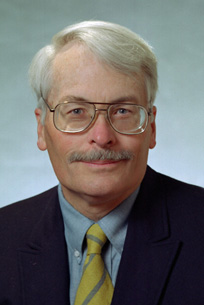New $1.7 million NSF grant helps Idaho State University engage in revolutionary historical research project
November 9, 2009
The Idaho State University history department is engaged in a revolutionary, interdisciplinary historical study that has attracted $1.7 million in funding from the National Science Foundation.
It isn't often the National Science Foundation funds a project from a humanities discipline with a history professor as a principal investigator, but that is exactly what happened earlier this fall when ISU history professor J.B. "Jack" Owens received an award for a project titled "Understanding social networks within complex, nonlinear systems: geographically-integrated history and dynamics GIS." About $1.3 million of the four-year grant will go to ISU, with about $471,000 to go to the University of Oklahoma and co-principal investigator May Yuan.
 "It is unusual for a history professor to be the lead PI (principal investigator) for a National Science Foundation grant and to be a lead PI on this large of a NSF grant is extraordinary," said Laura Woodworth-Ney, chair of the ISU history department. "This creates a world-class reputation for the ISU history department and our GIS (geographic information systems) based geographically-integrated history program and makes ISU the center for this type of activity."
"It is unusual for a history professor to be the lead PI (principal investigator) for a National Science Foundation grant and to be a lead PI on this large of a NSF grant is extraordinary," said Laura Woodworth-Ney, chair of the ISU history department. "This creates a world-class reputation for the ISU history department and our GIS (geographic information systems) based geographically-integrated history program and makes ISU the center for this type of activity."
Owens will manage the work of historians, GIS experts, computer scientists and mathematicians “to share historical social science data and develop geographically integrated frameworks to address complex, dynamic, nonlinear systems and social networks.”
"Through multidisciplinary collaboration, this project will fuse qualitative and quantitative data to connect humans, events, and environments, and through such connections to form historical narratives within and across geographic spaces," Owens said. "The project's ultimate goal is to better integrate into computational thinking the messy, ambiguous, uncertain, and contradictory information commonly used in history and the historical social sciences through computational innovation and narrative knowledge creation to revolutionize research outcomes in these disciples."
The project will focus on historical data from the first global age, 1400-1800, which will be generated through archival research, geographically-integrated data mining from digital files of historical documents and secondary works written by earlier historians, and data sets contributed by interested historians. Because the data will be made available to the project in different formats, the project will design a system to reorganize data sets into a common database format. The resulting database, the various software products, and documentation about techniques of analysis and visualization will be freely distributed through a project web site for use in research and classroom instruction.
Other prominent personnel from ISU who are central to the project include Daniel Ames, associate professor of geosciences, and Vitit Kantabutra, associate professor of computer science. Ames will be the GIS expert managing the geographic data for the study and the design of new software for the space-time representation of geospatial information, and Kantabutra will create the new type of database the project requires.
Other important personnel are the University of Oklahoma’s Yuan, associate dean and Edith Kinney Gaylord Presidential Professor, the College of Atmospheric and Geographic Sciences, and Director of the Center for Spatial Analysis; Emery Coppola, president and principal scientist, hydrologist and mathematician of NOAH, L.L.C., based in New Jersey; Aldo Gangemi, Italian National Research Council, who is the co-founder of the Laboratory for Applied Ontology in Rome, Italy; and Monica Wachowicz, Centre for Geo-information, Wageningen University and Research Centre, The Netherlands.
"The NSF looks on ISU’s historians as a cohort of researchers with the capacity to have a transformative impact on history and the historical social sciences through our ability to build innovative collaborative relationships and our focus on the application of new ways to understand historical reality," Owens stated.
This research project, according to Owens, will transform historical research with computational thinking:
• on new means for the representation of data for organizing, storing, manipulating and recovering them for exploration using computational tools;
• new spatial-temporal GIS for the visualization and analysis of real world dynamics;
• new tools for data harmonization;
• new approaches to the use of information that is vague, uncertain, and incomplete and of qualitative data within a computational context; and
• new forms of modeling.
This new grant both supports and is supported by the ISU history department’s master of arts in historical resources management, which offers students an opportunity to develop their history education through a focus on applied, geographically-integrated history. The program specifically concentrates upon the use of geographic information systems (GIS) and related information management and visualization technologies in the exploration of historical questions through individual research projects and the fostering through internships of the ability to collaborate. The new grant will also support the development of a new ISU interdisciplinary Ph.D. program in social and environmental dynamics.
Categories:
